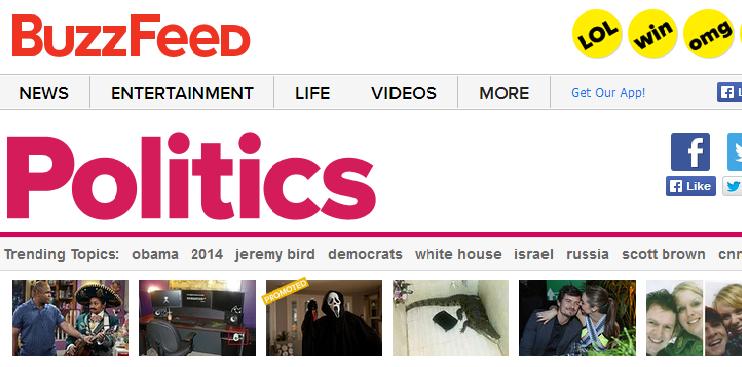By: Laura Owsiany
BuzzFeed made national headlines last week when viral politics editor, Benny Johnson, was fired for plagiarizing forty times over his 500-article, year-and-a-half career at the website.
BuzzFeed has become famous as a source of the latest viral stories, pictures, gifs and videos that distract as often as they inform. Most of the site is aggregate content from elsewhere on the web, but BuzzFeed’s success stems from its ability to package information in a concise and appealing way for mass consumption and sharing.
While some have admitted that the line between curation and copying can be thin in the world of social media, BuzzFeed Editor-in-Chief Ben Smith told Erik Wemple of the Washington Post, “I don’t think there’s anyone who gets out of high school thinking it’s OK to copy term papers.”
Smith staunchly holds that BuzzFeed’s structure in no way contributed to the incident, drawing a comparison between BuzzFeed’s early days and where it is now in an official statement released Friday: “Our writers didn’t have journalistic backgrounds and weren’t held to traditional journalistic standards, because we weren’t doing journalism. But that started changing a long time ago.”
But the site’s most frequently shared articles, or more often listicles, are rarely BuzzFeed Politics or News pieces. BuzzFeed can boast the presence of long form stories, but not their popularity. Even among news-related content, gif breakdowns of politicians’ interview bluffs or colorful amalgamations of the latest stories from other news sites are much more popular than originally reported stories.
As fellow new media sites Facebook and OkCupid face scrutiny for user manipulation, the BuzzFeed plagiarism incident comes at a bad time. Despite the fact that esteemed news outlets such as the New York Times and Washington Post have suffered similar cases of plagiarism, the failure of BuzzFeed to eliminate this all too common breach of ethics has drawn significant vitriol from traditional news sources.
Politico reported on the incident in two articles this week, “Plagiarism and BuzzFeed’s Achilles’ Heel” and “Net roots of BuzzFeed plagiarism.” Writer Dylan Byers cited BuzzFeed’s aggregation as a gateway to direct plagiarism, and Johnson’s lack of journalistic training and BuzzFeed’s inability to straddle the line of viral content and real news as the sources of the problem. He referenced earlier pieces by Slate and Gawker criticizing the site’s model for “pilfering” content and creating an environment conducive to plagiarism. The listicle format of which BuzzFeed is so fond has also come under fire as “cheap,” easily digestible but low on substance.
With the fall of print journalism and the uncertain revenue capabilities of purely web-based news, a vacuum still exists for sustainably profitable but responsibly reported news. Viral sites are often criticized for pandering to readers with fluffy style content that appeal to a large volume in lieu of hard, often unpleasant news. Yet, even a trip to the New York Times’ home page reveals that the most popular articles are often human interest pieces about sleep patterns, the rise of community gardens and therapy for your dog.
One platform, ProPublica, a non-profit site dedicated to in-depth, investigative journalism, runs on donations alone to maintain credible news in the new media era. Without the burdens of print or profit, the site has gained great success, with two Pulitzer Prizes under its belt.
BuzzFeed’s latest stumble and the subsequent media schadenfreude, as Byers called it, reminds us that profitable, high-traffic sites don’t often coincide with quality. Johnson’s plagiarism was unusually extensive, but indicative of a larger problem: a need for creativity.
Popular bloggers bring viral savvy and often social media following more consistently faithful than traditional outlets, but, again, raise questions of substance and credibility. With so many young people on the web, the void for popular but responsible journalism can be filled by the individual, if news sites know where to look. Brian Stetler, current CNN correspondent, began as a blogger, but his original reporting and wide reach landed him a job at the New York Times media desk. Like Johnson, he had no prior formal experience. Unlike Johnson, he had creativity.
BuzzFeed is right to try to turn its pop readership toward quality content. Their strategy should be advanced, not abandoned. But traditional media may not be on board, and without them and the rough fodder for “Our 9 Favorite Feature Stories this Week”, BuzzFeed and company won’t have a lot to work with. Johnson’s plagiarism reminds us that new media needs mass appeal, but also character and creativity.

